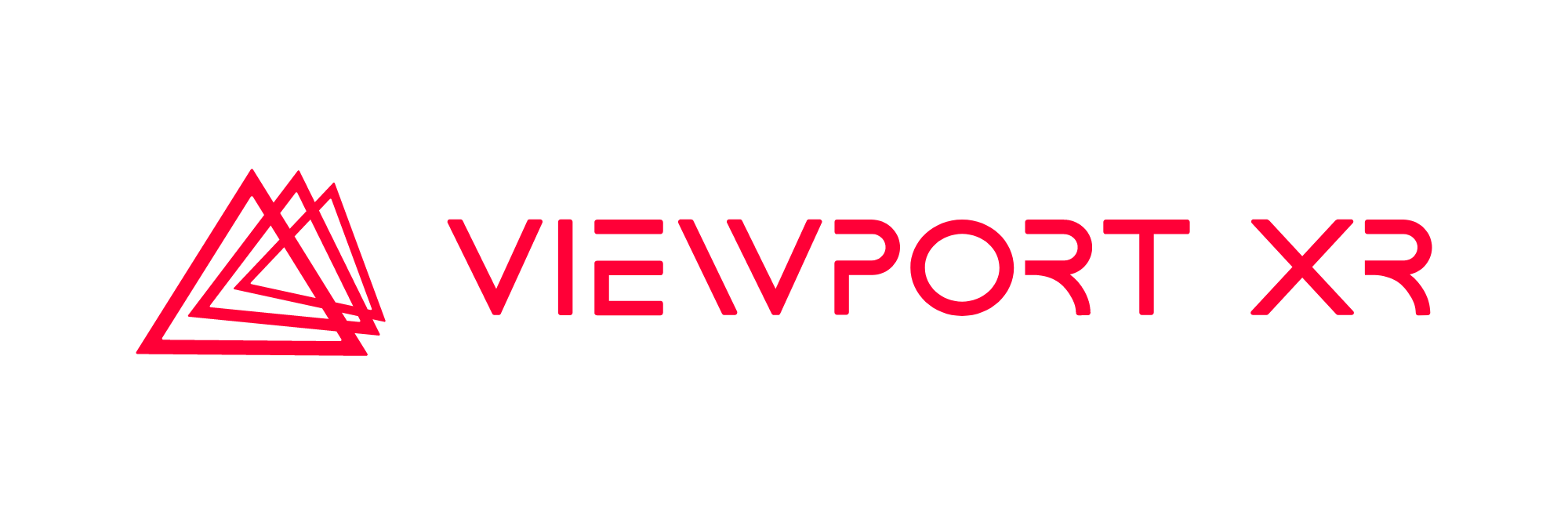Transforming Mining Communication
How Viewport XR’s 3D Visualisation and VR Solutions Resurrected Rio Tinto’s $2.4 Billion Serbian Lithium Project
Abstract
Picture this: a $2.4 billion mining project dead in the water, licences revoked, thousands of protesters in the streets, and a mining giant facing one of their biggest setbacks in recent history. Fast forward two years, and that same project is not only back on track but has been designated as a strategic EU project.
So what changed? Sometimes the difference between failure and success isn’t the technology itself, it’s how you tell the story.
This case study examines how our team at Viewport XR successfully transformed public perception and stakeholder engagement for Rio Tinto’s controversial Jadar lithium mining project in Serbia. Following the revocation of mining licences in January 2022 due to environmental protests, we deployed innovative stereoscopic 360-degree VR experiences, photorealistic 3D renders, and mining animation content across 12 HTC Vive Focus 3 devices. The comprehensive visualisation strategy, including major content updates in February 2024, contributed directly to the project’s licence reinstatement in July 2024 and subsequent designation as an EU strategic project in 2025.
The Stakes Couldn’t Have Been Higher
When Rio Tinto’s Serbian team first approached us here in Perth, they weren’t just looking for another marketing campaign. They were staring down the barrel of a complete project collapse. In January 2022, Serbia had revoked all of Rio Tinto’s exploration licences following massive environmental protests that brought thousands to the streets¹. We’re talking about a $2.4 billion lithium project that could produce 58,000 tonnes annually of battery-grade lithium carbonate. That’s about 17% of European demand and enough for one million electric vehicles³.
You might be wondering why we’re talking about a Serbian mining project when Viewport XR operates out of Perth, Western Australia. Well, that’s exactly the point. When complex infrastructure projects face community opposition, geography becomes irrelevant. What matters is your ability to transform technical complexity into something every stakeholder can understand, regardless of where they are in the world.
“ Without any project-accurate imagery available, news articles covering the early protests routinely featured misleading stock photography”
Here’s where the story gets particularly interesting from a visual communication perspective. Without any project-accurate imagery available, news articles covering the early protests routinely featured misleading stock photography – images of grimy underground coal mines with blackened workers, massive open-cut pits spanning kilometres, and industrial landscapes that bore no resemblance to Rio Tinto’s actual underground lithium extraction plans. This visual misrepresentation allowed opponents to paint a narrative of environmental devastation that wasn’t grounded in the project’s reality, but the absence of accurate, compelling project visuals meant there was nothing to counter these false impressions.
This is exactly the communication vacuum that sophisticated 3D visualisation fills. When you don’t control your visual narrative, someone else will. And they might not tell your story the way you’d like it told.
The Jadar project isn’t just another mining operation. If developed, it could cover 90% of Europe’s current lithium needs and help make Rio Tinto a leading lithium producer⁴. With the global push toward electric vehicles and renewable energy storage, the project’s strategic importance extends far beyond Serbia’s borders. But here’s the thing—none of that matters if you can’t communicate it effectively.
When Traditional Communication Falls Apart
Before Rio Tinto contacted our Perth-based team, no comprehensive 3D renders or visualisations had been created for the project. Think about that for a moment. A $2.4 billion project with global implications, and community engagement had been based entirely on traditional technical documentation—graphs, spreadsheets, and 2D drawings.
Anyone who’s tried explaining complex infrastructure using technical drawings knows exactly how that conversation goes. You end up with glazed eyes, confused stakeholders, and in this case, thousands of people in the streets demanding the project be scrapped. The local municipality was forced to abandon plans for land allocation, and the entire project faced an uncertain future⁵.
This is where the rubber meets the road in modern mining communication – and one of Viewport XR’s key differentiators in our services is narrative and communication, unravelling project pain points and using the medium we work with to drive home clear messaging. You can have the most environmentally responsible, economically beneficial project in the world, but if you can’t describe it succinctly without engineers and geologists pointing at graphs – you’re fighting an uphill battle with both hands tied behind your back.
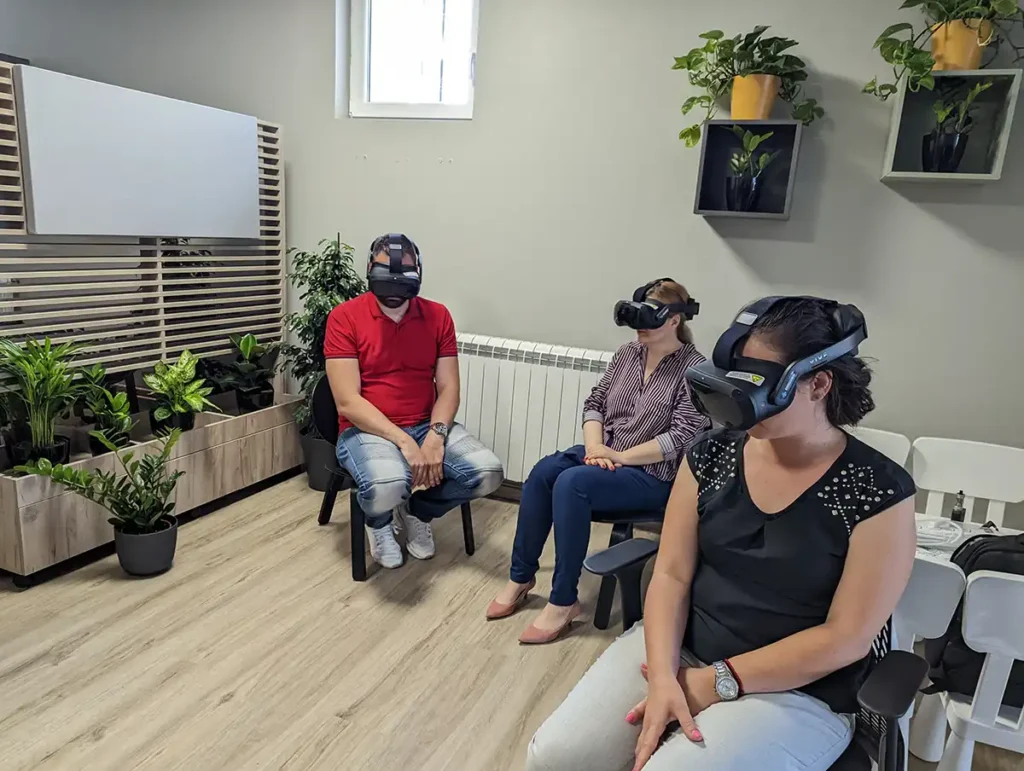
“…if you can’t describe it succinctly without engineers and geologists pointing at graphs – you’re fighting an uphill battle with both hands tied behind your back.”
Why 3D Visualisation Changes Everything
Mining companies operating in 2025 simply cannot rely on outdated methods of community engagement. We live in an era of heightened public scrutiny and environmental accountability, where traditional approaches fall short when communicating complex infrastructure projects to diverse stakeholders who may have varying levels of technical expertise.
The mining industry has increasingly recognised that gathering cold data into an accessible, visual format has a value that might well outweigh the cost and operational change required to make it work⁷. But what does that actually look like in practice?
The mining industry has increasingly recognised that gathering cold data into an accessible, visual format has a value that might well outweigh the cost and operational change required to make it work⁷. But what does that actually look like in practice?
Enhanced Stakeholder Understanding
Photorealistic 3D renders and mining animation break down barriers, allowing all stakeholders to see – and truly understand – what a mining project entails, regardless of their technical expertise. This transparency fosters trust and creates opportunities for meaningful collaboration between mining companies, government representatives, Indigenous groups, and local communities⁸.
Risk Mitigation and Planning
3D visualisation and rendering helps identify potential project challenges, streamline workflows, and enhances communication among teams and stakeholders. By visualising every aspect of a mining project through detailed flythrough sequences and interactive 3D renders, companies can manage community and stakeholder feedback and engagement proactively⁹.
Training and Safety
VR simulation provides an excellent platform for training, education, simulating abnormal and hazardous conditions in mines, and solving complex problems. Currently, VR is successfully used in the mining industry for key areas such as technical skills training, incident response, risk analysis, hazard awareness, and even data visualisation¹⁰.
Community Engagement
VR simulations can showcase a project’s impact on the surrounding environment, transportation systems, and public spaces, facilitating informed decision-making and enhancing transparency¹¹. The immersive format is a fantastic tool for exploring large scale projects, as the stereoscopic visuals give depth and scale to the projects.
Flying to Serbia: Where the Real Work Begins
When we committed to this project, we knew it wasn’t going to be another straightforward architectural walkthrough. Our team flew to Serbia to engage directly with the local team in Loznica, the Serbian town holding the strategic mineral deposit. This allowed our ground team to begin to unravel the cultural and emotional context surrounding the project.
We also delivered and deployed the hardware solution: 12 x HTC Vive Focus 3 units with custom video player software, each device configured in true kiosk mode and connected to an early-stage Remote Content Deployment (RCD) system for seamless content delivery and updates.
Here’s where things get interesting. In collaboration with HTC Taiwan, our team became the first company globally to be invited to test their RCD system (later superseded by their Vive Business Plus suite) due to the unique technical requirements of the Rio Tinto deployment. This pioneering collaboration allowed us to validate real-world use cases for remote content deployment, pushing updates from our Perth studio directly to devices deployed in Serbia, with server synchronisation managed through HTC’s Taiwan and Sydney data centres.
From Storyboards to Stereoscopic Reality
Working closely with Rio Tinto teams across London, Serbia, and Australia including their Melbourne and Sydney corporate offices—we designed, produced, and delivered a comprehensive suite of interactive media based on our photorealistic 3D rendering expertise and nearly decade-long experience in VR production and deployment.
Pre-Production and Storyboarding
The project began with meticulously hand-drawn storyboards that mapped out complex above-ground and underground scene interchanges. These detailed storyboards became the foundation for creative technical solutions, including innovative X-ray transition effects that seamlessly revealed the carefully mapped network of underground tunnels while supporting the narrative flow and providing spatial relationship feedback to the viewer between above ground and below.
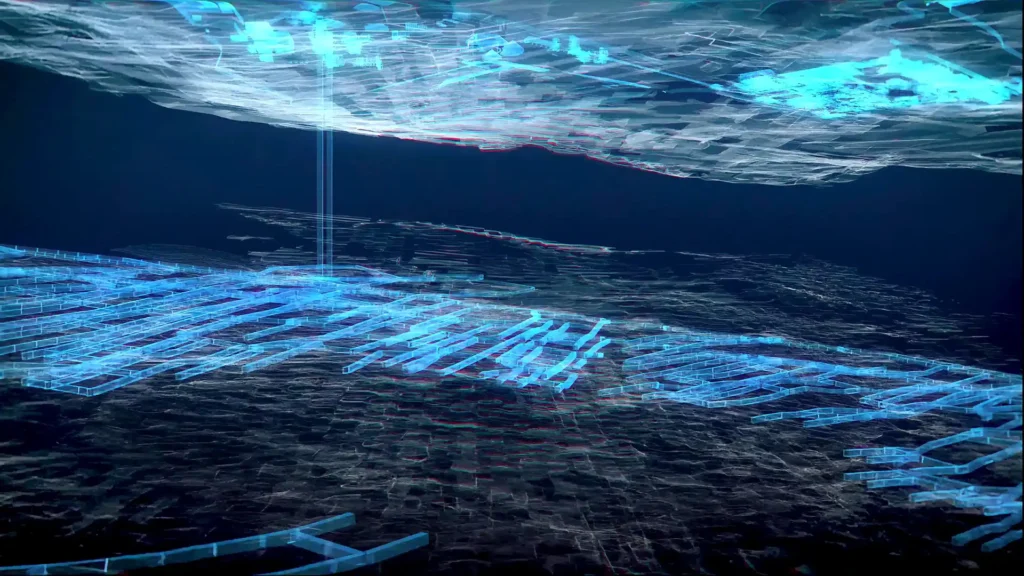
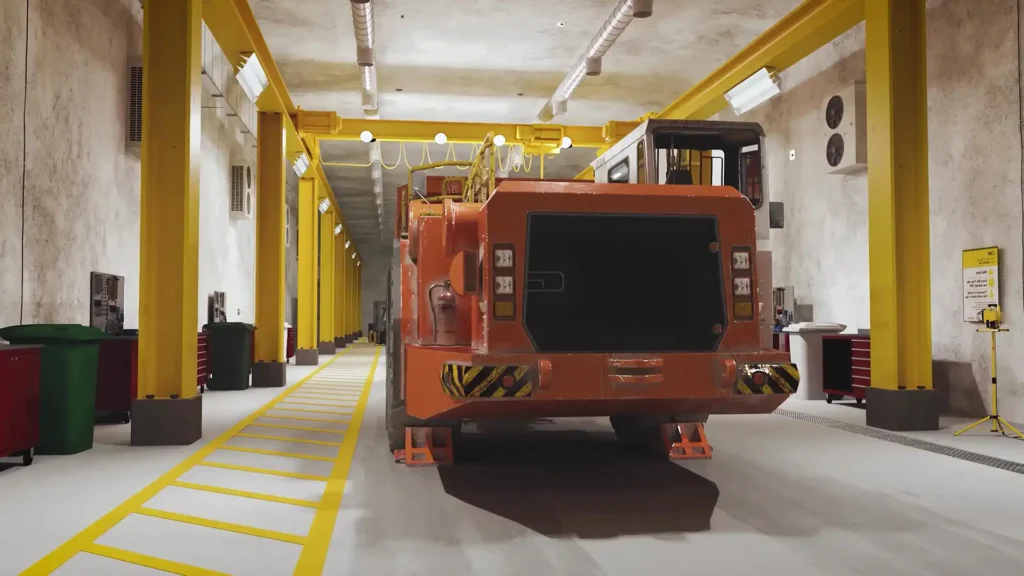
Environment Creation and Asset Development
Our technical pipeline leveraged multiple data sources for unprecedented accuracy:
- LiDAR and Satellite Data Integration: High-precision topographical data formed the foundation for terrain modelling in our 3D renders
- Forest Pack Implementation: Automated vegetation distribution combined with manual positioning and editing ensured realistic density across vast landscapes
- Environment Modelling: Detailed buildings and local features were meticulously recreated based on site surveys and photogrammetry for our flythrough sequences
- Custom Vehicle Creation: Purpose-built mining equipment and vehicles were modelled to exact specifications for Rio Tinto’s underground fleet
- Animated Elements: Custom animations for farm animals and agricultural activities brought the rural Serbian environment to life, reinforcing the clean operation messaging
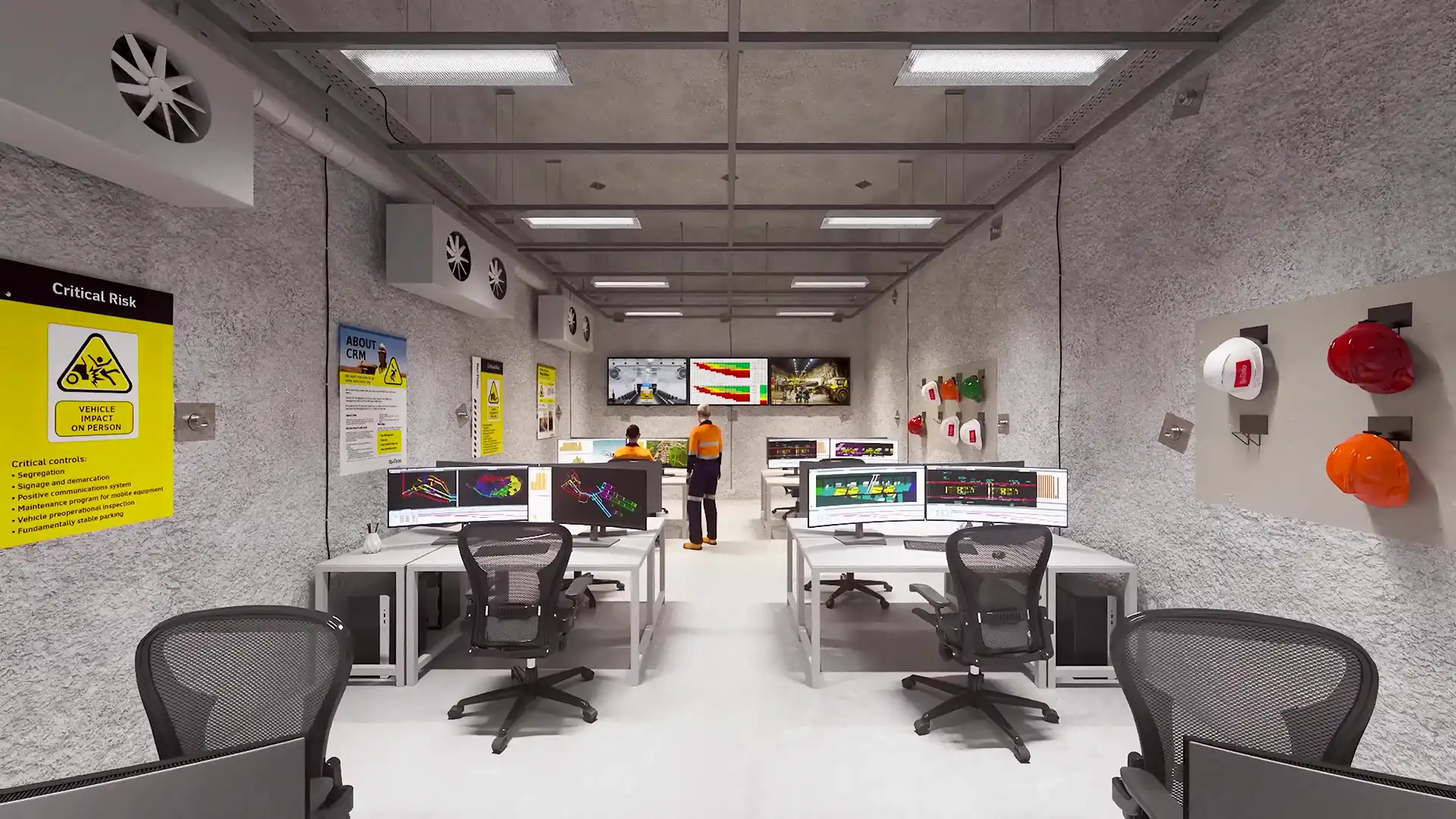
The Technical Deep Dive: Making Magic Happen
3ds Max Scene Management
Due to the vast scale of the mining project visualisation, our Perth-based technical team implemented sophisticated scene management protocols. We used XRef integration for complex mining infrastructure, allowing multiple team members to work simultaneously on different project sections while maintaining scene integrity. High-polygon mining equipment, geological formations, and vegetation were replaced with optimised proxy objects during viewport navigation, dramatically improving workflow efficiency.
Our technical team developed proprietary MAXScript tools to automatically optimise geometry for VR deployment, including polygon reduction algorithms specifically tailored for mining equipment and infrastructure. The production utilised 3ds Max for primary modelling and scene assembly, VRay for advanced ray-tracing and photorealistic lighting, and Unity for interactive elements and final VR application assembly.
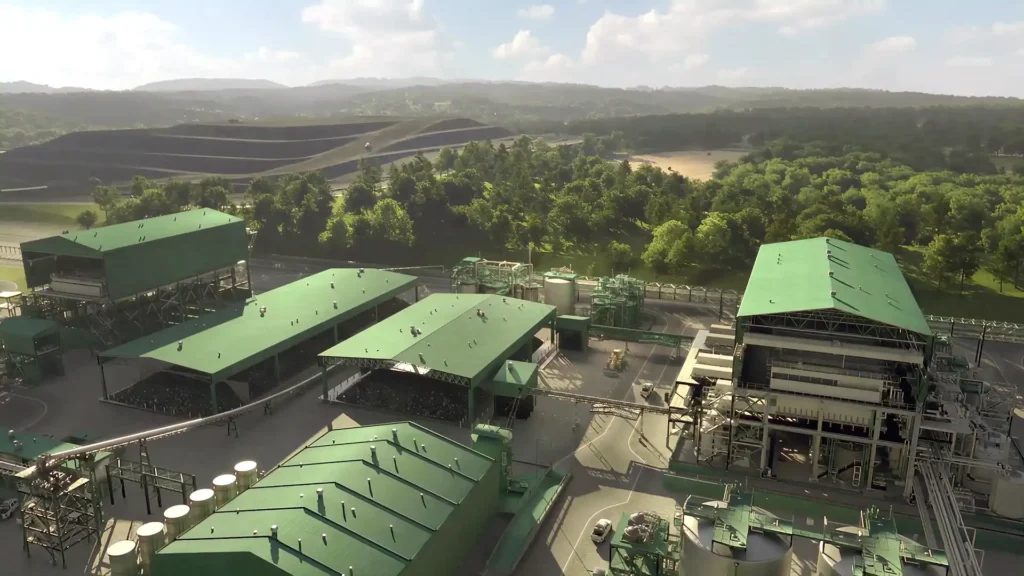
Stereoscopic 360 VR Production
The centrepiece of our solution was a stereoscopic 360-degree video specifically developed for VR headsets. If you’ve never worked with stereoscopic rendering – it’s a completely different beast to standard screen productions. Stereoscopic rendering requires significant camera planning and scene compiling considerations to achieve comfortable viewing experiences, plus a swathe of other specialised creative and technical approaches that most people in the industry simply don’t possess.
Working within the HTC Vive Focus 3’s technical limitations required careful optimisation. We had to run significant tests to find an undocumented maximum video resolution (with the Vive and our video player we hit 5126×5126), with H.265 encoding at a variable bitrate to balance quality with the device’s MediaTek XR2 processor capabilities. The team also tested thermal management for extended viewing sessions during public demonstrations, as we were pushing the limits of the device’s video playback capabilities.
The stereoscopic 3D rendering pipeline involved setup using VRay’s Stereoscopic tools, testing interpupillar distance (IPD – we set ours at 65mm) and optimising render quality versus render times. A huge impact on production overheads with 360 rendering is the requirement for detailed, realistic scene and asset creation behind the camera. With a standard screen production in 3D many scenes end up like a film set, there is nothing behind the camera – you’re shot locked. Not only does the creative team have to build this – it also needs to be rendered – pushing render testing and optimisation processes well beyond that of standard screen production rendering.
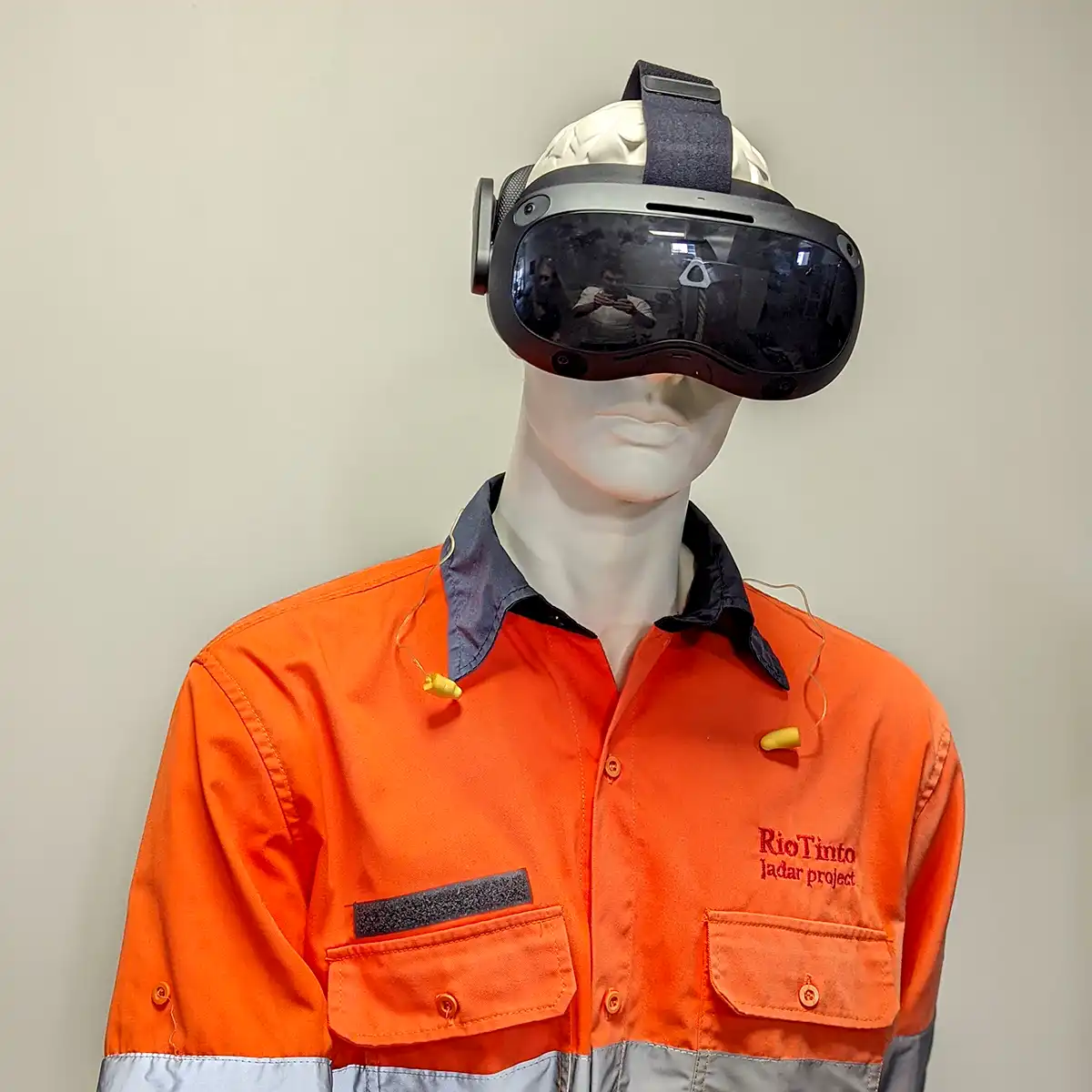
The Unique Challenge of 360-Degree Environments
Here’s something most people don’t realise about 360-degree VR production: unlike traditional 2D video production, stereoscopic 360 VR requires complete environmental modelling. Every surface visible in any direction needed detailed texturing, lighting, and geometric accuracy. This included areas behind the primary viewing angle, ensuring seamless immersion regardless of head movement throughout the mining site flythrough.
Creating compelling underground mining animation scenes presented unique technical challenges. We needed heavy displacement mapping for tunnel walls and rock formations to achieve realistic surface detail, dramatic lighting systems to balance visibility with atmospheric mood in underground environments, and structural engineering integration for accurate representation of mining infrastructure, support systems, and operational equipment.
Multi-Language Production and Global Collaboration
Liaising with international teams required sophisticated project management and cultural sensitivity. Script development occurred through meticulous collaboration with Rio Tinto’s Serbian team, while coordination with their Melbourne and Sydney offices ensured corporate alignment throughout the visualisation production process.
Working with voice-over artists from around the world, we managed the complex process of synchronising technical content with cultural communication preferences. The script was carefully crafted to work seamlessly in both languages while maintaining technical accuracy and emotional resonance across all mining animation content.
In February 2024, we delivered a major content update to the deployed VR systems, incorporating new geological survey data and enhanced mining animation sequences. This update was seamlessly pushed to all 12 HTC Vive Focus 3 devices in Serbia remotely from our Perth studio, demonstrating the power of our Remote Content Deployment system.
Custom Application Development: Making It Foolproof
Our team developed a custom, Rio Tinto-branded video player application specifically for the HTC Vive Focus 3 platform. This bespoke solution reflected our core philosophy: seamless, no-tech-experience-needed operation without complex user setup or menu systems.
Each device was configured for true kiosk operation, preventing user access to system settings while maintaining reliable operation during extended public deployment. The custom application featured intuitive navigation with a single-button language selection system, allowing users to seamlessly switch between English and Serbian content across all 3D renders and mining animation sequences.
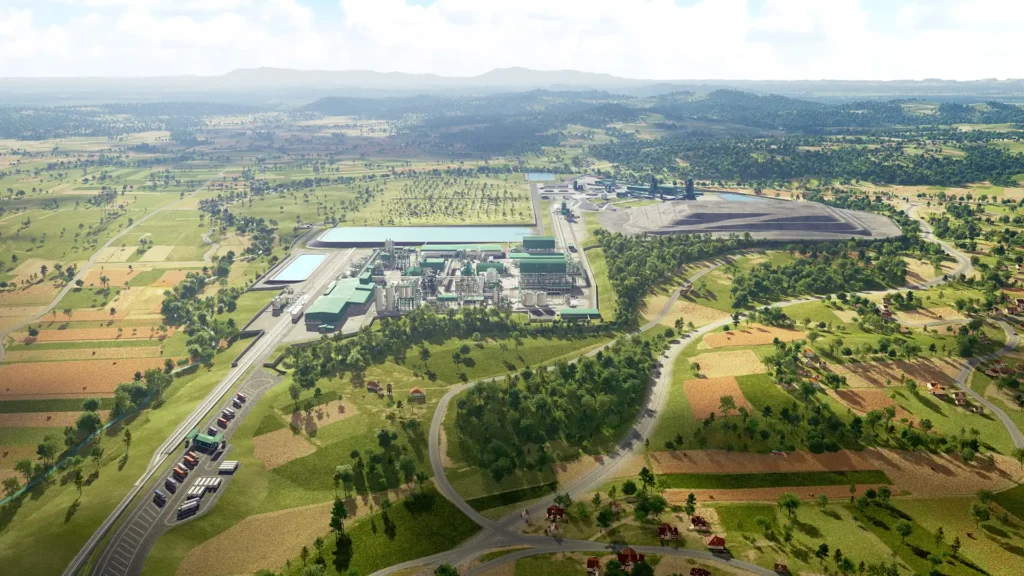
The Results: From Cancelled to Strategic
The results speak volumes about the power of advanced 3D visualisation and mining animation in transforming public perception and stakeholder engagement. In July 2024, Serbia’s government reinstated Rio Tinto’s permits for the project, with the Constitutional Court ruling that the government had “overstepped the limits of its competence” by revoking the initial permits¹².
Timeline of Success:
2022
Licences revoked amid protests
2022
Viewport XR deploys VR solution and supporting 3D renders
February 2024
Major content update with enhanced mining animation sequences
July 2024
Constitutional Court overturns government decision, describing it as unconstitutional¹³
July 2024
Serbian government reinstates spatial planning licence for the project¹⁴
Strategic Recognition: In June 2025, the European Commission designated Rio Tinto’s Jadar project as one of 13 strategic projects for critical materials located outside the EU, acknowledging its importance for Europe’s green transition and lithium supply security¹⁵.
The Serbian Rio Tinto team provided direct attribution of the reinstated license to the work Viewport XR created. There is a tangible impact of sophisticated 3D rendering and visualisation solutions on complex mining projects. Especially those with a level of public sensitivity.
“The Serbian Rio Tinto team provided direct attribution of the reinstated license to the work Viewport XR created. “
The Broader Australian Mining Revolution
Our work with Rio Tinto exemplifies a broader transformation occurring across the Australian mining industry. Design reviews can now take place remotely between Perth, Melbourne, and Sydney offices, saving on FIFO and face-to-face meeting costs, while users can walk around virtual mining sites and point out features for the entire team to see through immersive flythrough experiences¹⁶.
Mining companies across Australia are using data visualisation and VR to speed up mine planning processes and save significant costs. Industry reports indicate that companies have accelerated project timelines by two years and saved millions of dollars using digital twin technology and advanced 3D rendering¹⁷.
As technology advances, VR systems will allow users to zoom in and view embedded data on specific items, including maintenance schedules, capacity information, and technical specifications. This will impact the efficiency of maintenance and procurement tasks while remaining tied to 3D models and mining animation content.
Setting New Standards from Perth
Our Rio Tinto deployment established new benchmarks for VR content delivery in industrial applications across Australia. The custom application running on 12 HTC Vive Focus 3 units demonstrated the potential for distributed VR experiences across multiple locations, managed from our Perth headquarters.
The pioneering work with HTC’s Remote Content Deployment (Since replaced with the suite of tools and features available with Vive Business Plus) system, utilising Sydney and Singapore server infrastructure, proved the viability of centralised content management for global deployments, opening new possibilities for international mining project communication.
Lessons for the Australian Mining Industry
Early Visualisation Investment: Creating hyper-realistic 3D renders and mining animation that immerse stakeholders in vivid, accurate representations eliminates the need for technical interpretation and makes complex mining plans accessible to everyone. Early investment in visualisation can prevent costly delays and public relations crises.
Cultural Sensitivity: Multi-language content delivery and culturally appropriate communication strategies are essential for international projects. Technical accuracy in 3D renders must be balanced with accurate narratives, local communication preferences and cultural considerations.
Technology as a Bridge: 3D visualisation and mining animations are not just communication tools; they are bridges to understanding and drivers of innovation, offering dynamic, transparent approaches to building trust and ensuring collaboration.
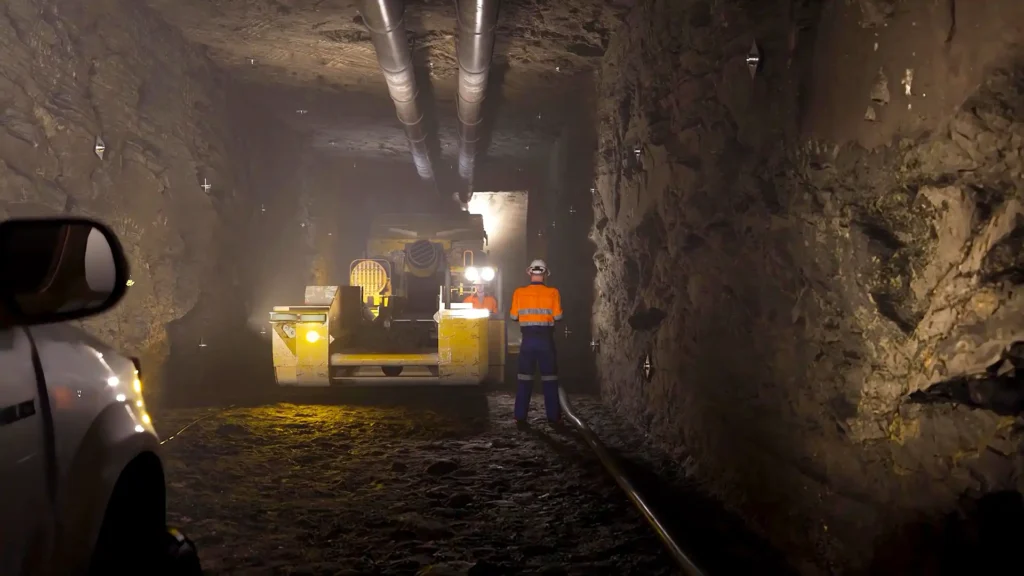
The Future of Mining Communication
The Rio Tinto Serbian lithium project demonstrates that the future of mining communication lies in immersive, accessible, and transparent visualisation technologies. By transforming complex technical data into compelling 3D renders, mining animation, and flythrough experiences, Australian mining companies can build the community trust and stakeholder buy-in essential for project success.
The project’s restoration—from cancelled permits to strategic EU recognition—directly correlates with our comprehensive visualisation and communication strategy. This success story illustrates how advanced 3D rendering and VR technologies developed in Perth can serve as powerful tools for community engagement, stakeholder education, and project communication in the modern global mining industry.
As the demand for critical minerals continues to grow alongside the global energy transition, the lessons learned from this project will prove invaluable for mining companies worldwide. The marriage of technical excellence, cultural sensitivity, and cutting-edge visualisation technology represents the future of how complex infrastructure projects communicate with the communities they serve.
Through our continued partnership with Rio Tinto and ongoing support for the Jadar project, Viewport XR remains at the forefront of this technological revolution from our Perth base, helping to shape the future of mining communication through innovative 3D visualisation, mining animation, and immersive VR solutions across Australia and globally.
References
- Reuters. (2022, January 20). Serbia revokes Rio Tinto lithium project licences amid protests. https://www.reuters.com/business/retail-consumer/serbian-government-revokes-rio-tintos-licences-lithium-project-2022-01-20/
- Reuters. (2022, January 21). Rio Tinto shares slide as Serbia pulls plug on $2.4 bln lithium project. https://www.reuters.com/markets/europe/rio-tinto-shares-slide-serbia-pulls-plug-24-bln-lithium-project-2022-01-21/
- Mining.com. (2024, October 20). Left and right ‘unite’ against Rio lithium project in Serbia. https://www.mining.com/left-and-right-unite-against-rio-tinto-lithium-project-in-serbia/
- Reuters. (2025, June 4). Rio Tinto revising cost of Serbia lithium project. https://www.reuters.com/sustainability/rio-tinto-revising-cost-serbia-lithium-project-2025-06-04/
- Reuters. (2024, October 16). Serbian protestors rally to oppose Rio Tinto’s lithium mine project. https://www.reuters.com/world/europe/serbian-protestors-rally-oppose-rio-tintos-lithium-mine-project-2024-10-16/
- Global Mining Review. (2025, January 8). Building community trust: How 3D visualisation shapes the future of mining. https://www.globalminingreview.com/mining/08012025/building-community-trust-how-3d-visualisation-shapes-the-future-of-mining/
- Mining Technology. (2019, December 23). A new dimension: bringing mine sites to life in 3D. https://www.mining-technology.com/features/mine-visualisation-3d/
- Research Institute for Mining and Metallurgy. (2024). Community Engagement in Mining Projects: Best Practices Report. https://www.mining-research.org/community-engagement-2024
- MDPI Sustainability. Application of Virtual Reality (VR) Technology in Mining and Civil Engineering. https://www.mdpi.com/2071-1050/16/6/2239
- PMC. Developing a Virtual Reality Environment for Mining Research. https://www.ncbi.nlm.nih.gov/pmc/articles/PMC6423544/
- Infrastructure Australia. (2023). Virtual Reality in Infrastructure Planning: Community Engagement Report. https://www.infrastructureaustralia.gov.au/vr-community-engagement-2023
- Reuters. (2024, July 11). Rio Tinto welcomes Serbian court ruling on lithium project. https://www.reuters.com/markets/commodities/serbian-court-rules-govt-decision-revoke-lithium-project-permit-unconstitutional-2024-07-11/
- SeeNews. (2024, July 16). Serbia reinstates permits for Rio Tinto’s lithium project. https://seenews.com/news/serbia-reinstates-permits-for-rio-tintos-lithium-project-1260638
- S&P Global. (2024, July 16). Serbian government to reinstate permits for Rio Tinto lithium project. https://cilive.com/commodities/metals-mining/news-and-insight/071624-serbian-government-reinstate-permits-rio-tinto-lithium-project
- Peoples Dispatch. (2025, June 5). EU labels Rio Tinto’s lithium mine in Serbia a strategic project. https://peoplesdispatch.org/2025/06/05/eu-labels-rio-tintos-lithium-mine-in-serbia-a-strategic-project/
- WSP. (2025, April 14). Increased Use Cases for Virtual Reality in the Mining Sector. https://www.wsp.com/en-ca/insights/increased-use-cases-for-virtual-reality-in-the-mining-sector
- Australian Mining Review. (2024). Digital Transformation in Australian Mining: Annual Report. https://www.miningreview.com.au/digital-transformation-2024
Author
